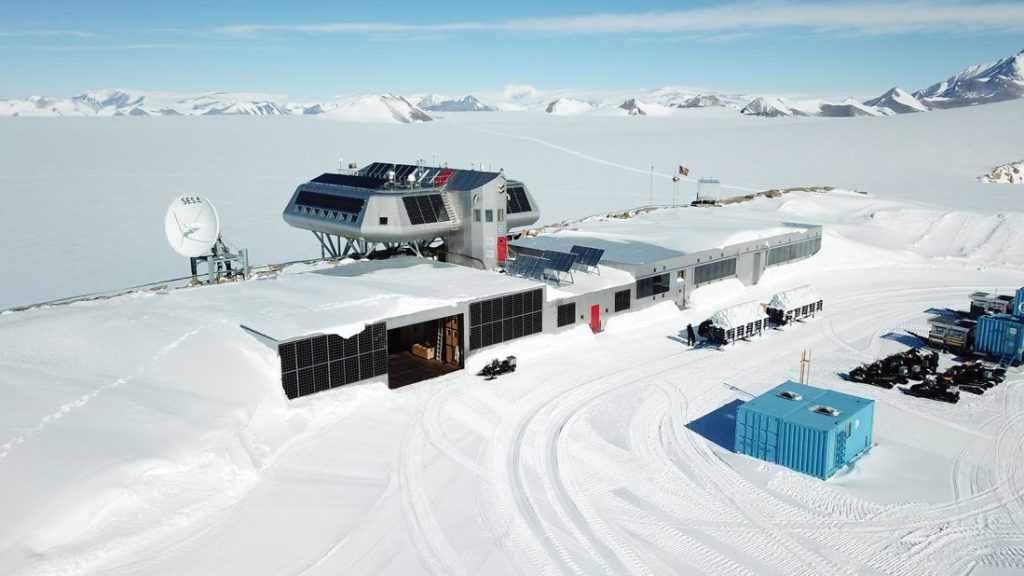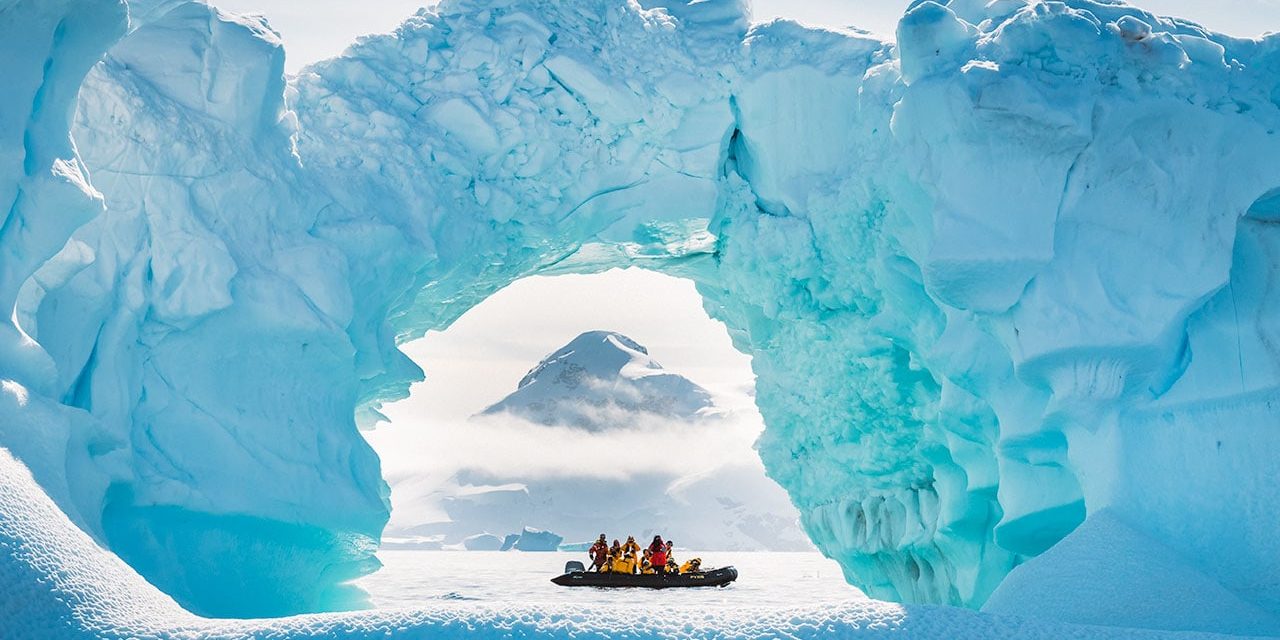 Antarctica, the fifth-largest continent on Earth, is a frozen wilderness that stretches over 14 million square kilometers, making it the most inhospitable and least explored continent. Here, amidst the frigid temperatures and icy expanses, numerous fascinating facts, statistics, and details await discovery. Antarctica, the frozen frontier is a very mysterious place.
Antarctica, the fifth-largest continent on Earth, is a frozen wilderness that stretches over 14 million square kilometers, making it the most inhospitable and least explored continent. Here, amidst the frigid temperatures and icy expanses, numerous fascinating facts, statistics, and details await discovery. Antarctica, the frozen frontier is a very mysterious place.
Extreme Cold and Temperature Records: Antarctica is renowned as the coldest place on Earth. While temperatures can plummet to as low as -128.6°F (-89.2°C) at the Soviet Union’s Vostok Station, the highest recorded temperature, a mere 67.6°F (19.8°C), occurred at the Signy Research Station. The continent’s harsh climate challenges human endurance, and surviving in such conditions requires specialized equipment and infrastructure.
Antarctic Ice Sheet and Freshwater Reservoir: Enveloping approximately 60% of the world’s fresh water, Antarctica’s ice sheet is a colossal reservoir of frozen resources. The average thickness of the ice sheet is around 1.9 kilometers, with some regions showcasing ice depths exceeding 4 kilometers. As a dynamic system, the ice sheet is in constant motion, influencing global sea levels.
Unique Antarctic Mountains: Antarctica boasts several mountain ranges, each with its own geological history. The Transantarctic Mountains, dividing East Antarctica from West Antarctica, and the Ellsworth Mountains, home to the highest peak, Vinson Massif (4,892 meters), contribute to the continent’s diverse topography.
Absence of Time Zones: Unlike other continents, Antarctica does not adhere to a standardized time zone. Instead, research stations typically adopt the time zone of the country operating the station. For example, the Amundsen-Scott South Pole Station follows New Zealand Standard Time (NZST).
Minimal Population and Scientific Presence: Antarctica has no permanent population due to the Antarctic Treaty, which prohibits military activities and mineral mining. During the austral summer, the population swells to around 4,000 individuals, mainly scientists and support staff residing in research stations operated by multiple countries.
Rich Biodiversity: Contrary to popular belief, Antarctica is not a lifeless expanse of ice. Penguins, seals, and various seabirds thrive in its frigid waters. The Weddell Seal, a common species, and the Emperor Penguin, the largest of its kind, exemplify the resilience of life in this extreme environment.
Iceberg Alley – The Weddell Sea: The Weddell Sea, known as “Iceberg Alley,” is renowned for hosting colossal icebergs that calve from the Antarctic Ice Sheet. These icebergs, drifting through the Southern Ocean, create an awe-inspiring spectacle and play a crucial role in the region’s ecology.
Marine Protected Areas: In 2016, the Ross Sea became the world’s largest Marine Protected Area. This designation aims to preserve the pristine marine environment and protect the diverse marine life inhabiting the region.
Scientific Research Hub: Antarctica serves as a hub for scientific research, with numerous research stations operated by countries worldwide. The McMurdo Station, managed by the United States, stands as one of the largest and oldest research facilities, facilitating a wide array of scientific investigations.
Antarctic Ozone Hole: Antarctica is infamous for the Antarctic ozone hole, an atmospheric phenomenon occurring during the Southern Hemisphere’s spring. This depletion of ozone molecules contributes to increased ultraviolet radiation reaching the Earth’s surface.
Ice Cores and Climate Records: Ice cores extracted from Antarctica’s ice sheets provide invaluable insights into Earth’s climate history. These ice cores, containing air bubbles and isotopic markers, enable scientists to reconstruct past climate variations and understand the impact of human activities on the environment.
Antarctic Circumpolar Current: The Southern Ocean surrounding Antarctica is home to the Antarctic Circumpolar Current, the world’s strongest ocean current. Circulating clockwise around the continent, this current plays a crucial role in regulating global climate patterns.
Polar Desert – Earth’s Driest Desert: Despite its icy appearance, Antarctica is classified as the world’s driest desert. With precipitation levels lower than those in the Sahara, Antarctica’s polar desert status underscores the unique challenges faced by its inhabitants, both human and wildlife.
Flightless Midges – Antarctica’s Only Native Insect: Antarctica hosts the world’s only insect species native to the continent – the Antarctic midge. These flightless insects have adapted to the extreme cold by producing antifreeze proteins, allowing them to survive in a habitat seemingly inhospitable to most life forms.
Antarctic Treaty System: Established in 1959, the Antarctic Treaty designates Antarctica as a scientific preserve and prohibits military activities and mineral mining. Signed by 54 countries, the treaty promotes international cooperation in scientific research and environmental protection.
Lakes Beneath the Ice: Subglacial lakes, such as Lake Vostok, lie hidden beneath Antarctica’s ice sheet. Isolated for millions of years, these lakes offer scientists a glimpse into unique ecosystems and potential habitats for extremophiles.
Gateway Cities: Ushuaia in Argentina and Punta Arenas in Chile serve as common departure points for expeditions to Antarctica. These gateway cities play a crucial role in facilitating logistics and transportation to and from the continent.
Antarctica, with its extreme conditions, unique ecosystems, and rich geological history, remains a captivating frontier for scientific exploration. As researchers continue to unveil the secrets hidden within its icy depths, Antarctica stands as a critical barometer for understanding global climate change and the intricate interplay of Earth’s systems. The continent’s remote and pristine nature underscores the importance of responsible exploration and conservation efforts in preserving this frozen wilderness for future generations. Antarctica, the frozen frontier is a very mysterious place.

Let us embark on a journey through the annals of Antarctica’s history, unraveling the tales of discovery, challenges, and scientific endeavors that have shaped this frozen continent.
Early Exploration and Mythical Notions: For centuries, the existence of a vast southern continent captured the imaginations of sailors and cartographers. Ancient maps often depicted a Terra Australis Incognita, a speculative landmass believed to balance the Earth’s continents. The allure of undiscovered territories fueled the dreams of explorers seeking fame and fortune.
Antarctica’s First Sighting: The first confirmed sighting of Antarctica is attributed to the English merchant and seaman Captain James Cook in 1773. Though Cook circumnavigated the continent, he was unable to land due to the persistent ice barrier. His voyages laid the foundation for subsequent exploration.
Heroic Age of Antarctic Exploration: The late 19th and early 20th centuries witnessed the “Heroic Age of Antarctic Exploration.” Pioneering expeditions, often marked by extreme hardship and sacrifice, sought to unlock the mysteries of the southernmost continent. Notable explorers like Sir Ernest Shackleton, Robert Falcon Scott, and Roald Amundsen became synonymous with Antarctic exploration during this era.
Race to the South Pole: One of the defining moments in Antarctica’s history was the race to reach the South Pole. In 1911-1912, Roald Amundsen’s Norwegian expedition successfully reached the pole, narrowly beating the ill-fated British expedition led by Robert Falcon Scott. The intense competition exemplified the determination and risks associated with polar exploration.
Endurance Expedition – Shackleton’s Remarkable Journey: Perhaps one of the most incredible tales of survival in Antarctic history is the Endurance Expedition (1914-1917) led by Sir Ernest Shackleton. After their ship, the Endurance, was trapped and crushed in the Weddell Sea ice, Shackleton and his crew endured unimaginable hardships, ultimately surviving through sheer resilience and leadership.
Antarctic Treaty System: As the mid-20th century dawned, Antarctica became a focal point for global cooperation rather than competition. The Antarctic Treaty, signed in 1959 by 12 countries, established the continent as a zone of international scientific cooperation, banning military activity and mineral mining. Over the years, the treaty has garnered widespread support, with 54 countries currently signatories.
Scientific Exploration and Research: With the establishment of the Antarctic Treaty System, the focus shifted from exploration to scientific research. Research stations, manned by international teams, were established to study climate, glaciology, geology, and biology. Antarctica’s harsh conditions provided a unique environment for scientists to unravel the mysteries of Earth’s past and present.
Discovery of Subglacial Lakes and Ancient Fossils: In recent decades, technological advancements have allowed scientists to make groundbreaking discoveries beneath Antarctica’s ice. Subglacial lakes, such as Lake Vostok, have been uncovered, raising the possibility of finding ancient microbial life. Fossilized remnants of forests hint at a prehistoric Antarctica vastly different from the icy landscape we see today.
Challenges of Antarctic Research: Antarctic exploration and research are not without challenges. Harsh weather conditions, extreme isolation, and logistical complexities make scientific endeavors on the continent particularly demanding. Yet, these challenges are met with unwavering dedication as researchers strive to expand our understanding of the Earth’s climate system.
Environmental Conservation and Stewardship: As humanity grapples with the consequences of climate change, Antarctica assumes a critical role in global environmental conservation. The preservation of its pristine ecosystems and the delicate balance of its ice sheets are paramount to understanding and addressing the broader challenges facing our planet.
Antarctica in the 21st Century: Today, Antarctica continues to be a focal point for scientific research and international collaboration. The continent’s unique position as a barometer for global climate change underscores the importance of ongoing efforts to study, conserve, and responsibly manage this frozen frontier. Antarctica, the frozen frontier, our last frontier here on planet earth.
In conclusion, Antarctica’s history is a tale of human curiosity, endurance, and the relentless pursuit of knowledge. From the early visions of mythical southern lands to the Heroic Age of Exploration, and now as a sanctuary for scientific inquiry, Antarctica remains a testament to the boundless possibilities that unfold when humans venture into the unknown. As we unlock the secrets held within its icy embrace, Antarctica stands not only as a testament to our past but also as a guiding beacon for our shared responsibility towards the future of our planet. Antarctica, the frozen frontier is a very mysterious place. Do you like Antarctica stories? Maybe thrillers or mysteries. Have you read Arctic Record yet? Read the first chapter on this website or buy it Arctic Record on Amazon and see how you like it. Antarctica: The Frozen Frontier.







